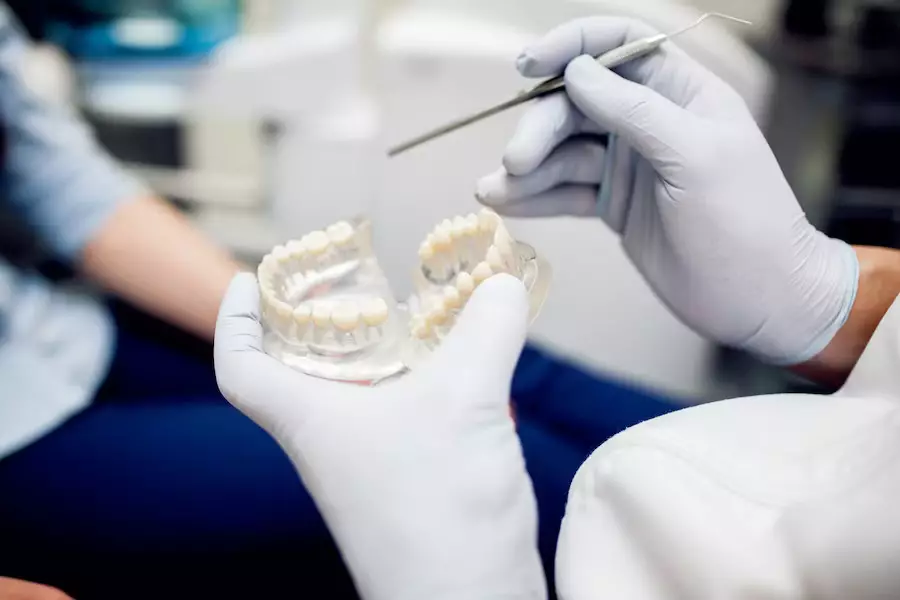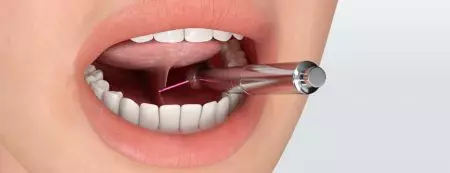Content[ hide ]
- Crown or implant: which is better?
- Advantages of crowns
- Disadvantages of crowns
- Advantages of implants
- Disadvantages of implants
- Dental crown or implant: which one to get
- Prosthodontics and dental implants: a comparison of the main factors
- When crowns are placed
- When implants are placed
- Price comparison for crown and implant placement
- Conclusions
Crown or implant: which is better?
To understand what is better, a crown or an implant, it is necessary to know what is behind these concepts:- A crown is a fixed prosthesis that is placed on the visible part of the tooth and fixed with a special cement. It is usually placed on a partially decayed tooth. It is necessary to take into account the condition of the remaining tissue and the root. It is very important to treat the canals properly.
- An implant is a post that is implanted in the jaw to replace the root of a tooth. It is usually made of titanium, a high-quality material that does not cause allergies. However, implantation is only the beginning of treatment. In the future, an abutment and a crown must be placed on the post. The abutment is a connecting element that is attached to the implant and supports the crown. The crown, as in the first case, serves to restore the aesthetic appearance and functionality of the tooth.
- the condition of the tooth;
- contraindications;
- tooth loss;
- Gum and bone health;
- age;
- the patient’s financial situation.
 It is not possible to say definitively whether a crown or an implant is better, as these elements have different functions. The choice depends on the patient’s specific situation and preferences. At the same time, the question of whether a dental implant or a crown is better is not quite correct. In any case, prosthetics involves the installation of a crown. If there are healthy tissues, the crown covers the native tooth. If it is recommended to remove the root of the tooth, a crown is placed on the implant.
It is not possible to say definitively whether a crown or an implant is better, as these elements have different functions. The choice depends on the patient’s specific situation and preferences. At the same time, the question of whether a dental implant or a crown is better is not quite correct. In any case, prosthetics involves the installation of a crown. If there are healthy tissues, the crown covers the native tooth. If it is recommended to remove the root of the tooth, a crown is placed on the implant.
Advantages of crowns
To understand whether an implant or a crown is better, it is worth exploring the pros and cons of each solution. Crowns are one of the popular methods of restoring teeth in dentistry. Let’s consider their advantages: Crowns are used to restore teeth with damaged structure or shape, ensuring their natural appearance and functionality. They also allow the tooth to retain its structure and strength. Crowns are used to strengthen teeth with large fillings or after endodontic treatment (root canal). Crowns can be made of different materials such as ceramic or metal-ceramic, which reproduce the natural colour, shape and texture of the teeth. This improves the aesthetics of the smile. Crowns provide comfort and functionality for biting and eating. Crowns are made of strong materials, so they are durable. The placement of a crown is usually less complicated than dental prosthetics and requires less time. In addition, the cost of this procedure is lower.Disadvantages of crowns
Like any medical procedure, dental crowns have their own disadvantages. These include:- the need for root treatment and tooth grinding;
- some require additional tooth strengthening;
- average service life is 10 years;
- the likelihood of inflammation under the crown.
Advantages of implants
There are many pros and cons of dental implants. Let’s do a thorough analysis of the main aspects. The main advantages of implants are:- Absence of bone destruction process.
- Natural appearance.
- Supporting the surrounding teeth.
- High functionality.
- Durability.
Disadvantages of implants
Like any medical procedure, dental implants also have their own limitations and disadvantages:- complexity of the procedure – the need for surgical intervention;
- high cost;
- time constraints – the installation procedure takes 3 to 6 months;
- contraindications to surgery.
Dental crown or implant: which one to get
The decision whether to place a crown on a tooth or an implant depends on many factors. The main ones are:- Tooth condition. If your tooth is in reasonably good condition, a crown may be the preferred option. In this case, the tooth is prepared and treated for a denture that will be attached to your own tooth. A crown may also be placed on a chewing tooth with a large filling.
- Number of missing teeth. If you have several teeth missing next to each other, you may want to consider a dental bridge. This is a structure consisting of several crowns connected to each other that are placed over the teeth. A dental bridge is a common practice in dentistry: it is comfortable and aesthetically pleasing.
- Bone tissue. The amount and quality of bone tissue in the area of a missing tooth can also influence the decision between a dental crown or an implant. If there is not enough bone tissue in the area of the missing tooth, additional procedures may be required before implantation. For example, bone preparation or gum lifting. In this case, the process will be longer and more costly.
 Your personal preferences regarding appearance and comfort may also influence your choice of dentures.
Your personal preferences regarding appearance and comfort may also influence your choice of dentures.
Prosthodontics and dental implants: a comparison of the main factors
Let’s compare the key metrics of implant and crown placement:- Rehabilitation period. For implants – up to six months, for crowns – 2 weeks.
- Need for surgery. In the first case yes, in the second case no. Dental implantation can be performed under local anaesthesia or under sedation.
- Pre-implant manipulation. Implantation may require tooth extraction. For crowns – root canal treatment, tooth grinding.
- Lifetime warranty. In the first case – lifetime warranty. In the second case – 10-15 years.
When crowns are placed
Crowns are placed in a variety of cases – let’s look at the most common ones:- Destroyed tooth. When a tooth is severely destroyed by decay or trauma, and the remaining tooth tissue is unable to provide sufficient strength and function, a crown may be required. It covers the remaining tooth and restores its shape, size, and function.
- After root canal treatment. Often after endodontic treatment, the tooth may need to be strengthened and protected with a crown. This is because after root canal treatment, the tooth may become more brittle and susceptible to damage.
- After tooth implantation. When the tooth root is replaced with an implant, a crown is placed on it to restore the appearance and function of the tooth.
- Cosmetic purposes. Crowns can also be used for aesthetic purposes to improve the appearance of a tooth. For example, a crown is placed on a tooth that is defective in shape, colour or size.
- Replacing old crowns. If an old crown is worn, damaged, unsightly or has lost its function, it must be replaced.
When implants are placed
Implants are placed in cases such as these:- Missing teeth. Implantation is performed in case of complete absence of teeth in the dental row, loss of one or more teeth. Implants replace the roots of the teeth, and dental crowns, bridges or dentures are placed on them to restore the function and aesthetics of the teeth.
- Extensive inflammation around the root of the tooth or a fractured tooth. In this case, an implant may be more appropriate.
- Teeth unsuitable for bridge support. Implants can be used as a stable support for a bridge. This is appropriate if the adjacent teeth are in good condition.
- Bad removable dentures. When removable dentures fail to perform or cause discomfort, implants are used. This is more stable and comfortable for the patient.
- Bone Restoration. Implants can also be used in cases where the bone tissue in the dentition has atrophied due to the long-term absence of teeth. By performing an augmentation procedure or using special implants, bone tissue can be restored.
Price comparison for crown and implant placement
Prices for crown and implant placement can vary depending on many factors – the location of the clinic, the doctor’s qualifications, the complexity of the case, the materials and technology used, and local market conditions. In general, implant placement is usually a more expensive procedure than crown placement because it involves a more complex surgical process. The cost of implant placement usually consists of several components such as:- the cost of the implant itself;
- surgical procedure to insert an implant into the bone (including X-rays and CT scans);
- a possible bone augmentation procedure;
- temporary dentures and permanent crowns or bridges to be placed on the implant.





